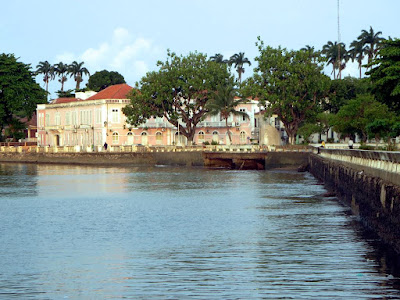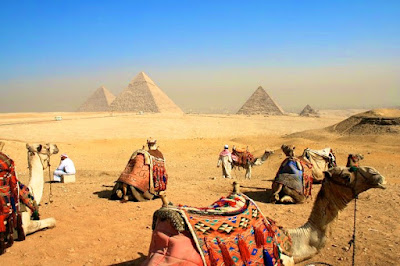On 5 April 1722, the Dutch navigator Jakob Roggeveen (1659-1729) saw an inland 9 miles (14 Km) distant and ordered his flotilla to set course for it. He was in the South Pacific looking for ‘terra australis’ – a great continent first suggested by Aristotle, which many believed lay on the other side of the world from Europe and which even appeared on some of the more optimistic maps and charts of the day. Terra australis would prove to be a myth, but the island Roggeveen was heading for was as real as it was unexpected.
Read More:10 of the greatest desert on Earth
An enigmatic culture
After landing on the island Roggeveen claims to have found a land devoid of trees but with rich soil producing enough bananas, sweet potatoes and sugar cane to support a large population. There were many thousands of inhabitants, and his men opened fire on some of them within minutes of landing. But Easter Island was and remain the most isolated inhabited island on earth, so where had these people come from and why were they living in a land of the fallen statue? These questions, together with the mystery of what became of the culture that built the immense stone statues, or moai, were among the greatest puzzles in the history of archaeology.
It was the late 19th century before archaeology came to Easter Island and began their investigations, and over a century more before most of the answers came to light. In 1955 the Norwegian explorer Thor Heyerdahl (1914-2002) arrived with An American anthropologist, Dr. William Mulloy (1917-78), who studied the origins of the island’s population. Mulloy was the first archaeology to take pollen samples – he removed soil segments from different stratigraphic levels and identified plant pollens (which survive very well in archaeology contexts) remaining in them. From there, he built up a picture of an island that was very different from the one Roggeveen had described. In the mid-first millennium AD, the first settlers of Easter Island had arrived to find a lush broad-leafed rainforest. The settlers brought with them new crops – sweet potato, banana, paper mulberry and taro – and domesticated animals, including chickens as well as the less welcome rats.
Levels of burning in Mulloy’s excavations show that setters wasted little time, in the beginning, to clear the forest to make room for fields. From that moment, the ecology of Easter Island began to change. Human predation and egg-taking by rats forced the wild bird populations onto the small islets surrounding the main island, but the clearance of the forest revealed a rich and productive soil that allowed the human populations to grow and flourish.
The golden age (c.1000-1600)
From around Ad 1000, Easter Island entered its greatest era, during which the moai statues were constructed. These massive stone heads on truncated torsos were mainly carved from single pieces of compressed volcanic ash. The largest moai ever erected, known as paro, was nearly 10 meters (33ft) tall and weighed 76 tonnes (84 tons). One unfinished example is 24 meters (69 ft) tall and would have weighed 274 tonnes (302 tons). The finished statues were erected at the ceremonial site, often on beautifully worked stone platforms (ahu), and excavations of example which fell face down have shown that the characteristic deep eye sockets of the heads originally held large coral eyes.
Exactly what was the purpose of the 887 known moai is uncertain, although the most widely accepted theory is that they represented the spirits of dead ancestors and may have embodied the power of living chiefs descended from them. Their construction certainly required huge resources and during this period the island’s population swelled to between 10,000 and 20,000.
Conflict and destruction
By the 18th century, Easter Island was almost devoid of trees and the destruction of the forest to provide wood for building and boats ( and perhaps rollers for moving the moai) and to clear areas for agriculture led to a progressive impoverishment and erosion of soil. These factors, together with the pressure caused by a growing population, meant that Easter Island society began to change rapidly. At the main moai quarry over 400 figures still, lie abandoned in various states of preparation. Archaeological sites of this era also contain something new – a large number of obsidian spearheads and daggers, suggesting increasing conflict in society. Finally, the moai themselves were toppled.
When Roggeveen arrived on the island no moai remained standing. Nearly all the trees had gone and legends told of a terrible period of starvation and cannibalism causing the population levels to fall dramatically to 2000 or 3000. Archaeology shows that the diet change around this time: the remains of fish and seafood disappear from rubbish pits, perhaps because of a lack of wood for making fishing boats. Birds, driven offshore by predation, also disappeared from the menu.
But the culture Roggeveen found was managing to adapt. At the ceremonial village of Orongo, stone carving shows the emergence of a new ‘birdman’ cult in which tribes vied to be the first to bring back an egg from the offshore nesting grounds of the sorry tern. Each year boys would climb down the cliff, swim half a mile (1 km) out to the rocky islet and wait for the migratory terns to arrive. The first to take an egg, then swim back and climb the cliff won for tribe the right to manage food distribution for that year. Perhaps the Easter Islanders had succeeded in replacing warfare with a competition.
The re-erected moai whose eyeless heads now stare across the treeless landscape that their culture transformed bear witness to one of the most famous man-made ecological disasters ever uncovered by archaeology. But it is the outside world which must bear responsibility for Easter Island’s final decline. The culture Roggeveen found may only have been a shadow of what had gone before, but it was adapting. When news of Roggeveen’s ‘discovery’ of Easter Island reached Europe, however, it brought more than archaeologists to the island. In 1862 slave traders landed from Peru and abducted one-third of the remaining population. Fifteen abducted islanders who eventually returned brought with them a disease that had never before threatened their remote island home – smallpox. By 1877 only 111 Easter Inlander survived.




















































